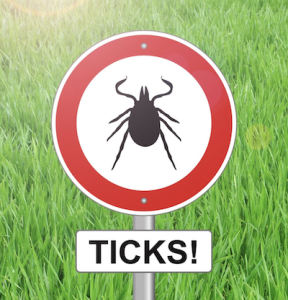In South Carolina, Every Season is Tick Season: What You Need to Know
April 29, 2024Ticks are a persistent issue for residents of South Carolina, with the risk of encountering these troublesome pests lasting all year round. The South Carolina Department of Health and Environmental Control (DHEC) is raising awareness about the prevalence of ticks and offering crucial advice on how to prevent and handle tick bites.
DHEC is currently highlighting the emergence of the Asian longhorned tick, but this is just one of six tick species commonly encountered in South Carolina. Among these are the notorious blacklegged tick and the American dog tick. Despite assumptions that ticks become more active in the summer, the temperate climate of South Carolina means ticks can remain active throughout the year, posing a constant risk of tick bites and potential transmission of tick-borne illnesses.
Ticks do not jump or fly; instead, they latch onto passing hosts by clinging to grasses or shrubs until brushed against. Once attached, ticks can transmit various diseases, including Lyme disease and Rocky Mountain spotted fever. Some diseases, like Powassan virus disease, can transmit rapidly, infecting a host within minutes of attachment.
Beyond transmitting diseases, ticks can cause tick paralysis due to the release of a toxin, resulting in tingling and numbness. However, while these risks may seem daunting, DHEC emphasizes practical steps to mitigate them.
DHEC recommends several preventative measures to keep individuals and pets safe year-round. Before venturing outdoors, covering up with protective clothing—such as long pants and shirts—can reduce exposure. Additionally, using Environmental Protection Agency (EPA)-registered insect repellents can effectively deter ticks
After outdoor activities, thorough tick checks are essential. DHEC advises individuals to inspect themselves and their pets daily. Taking a prompt shower with soap and shampoo can help remove any unattached ticks and prevent new attachments.
In the event of finding an attached tick, it’s crucial to remove it properly. Contrary to popular belief, methods like applying nail polish or Vaseline can be counterproductive, potentially increasing the risk of disease transmission. Instead, use fine-tipped tweezers to grasp the tick as close to the skin as possible and steadily pull it out without twisting or jerking. After removal, clean the bite area with soap and water and apply an antiseptic.
While some may believe that using a match to apply heat can remove ticks, this method is simply an old wives’ tale. Carrying a matchbook for this purpose is unnecessary and ineffective.
To monitor for potential symptoms of tick-borne diseases, DHEC advises noting the date of the tick attachment. Prompt medical attention should be sought if symptoms such as fever, rash, or joint pain develop after a tick bite.
By staying vigilant and following these guidelines, you can enjoy the outdoors more safely, knowing how to prevent and handle tick encounters effectively. While ticks may persist throughout the seasons, informed prevention and quick action can significantly reduce the risks associated with these tiny but potentially harmful pests.



















